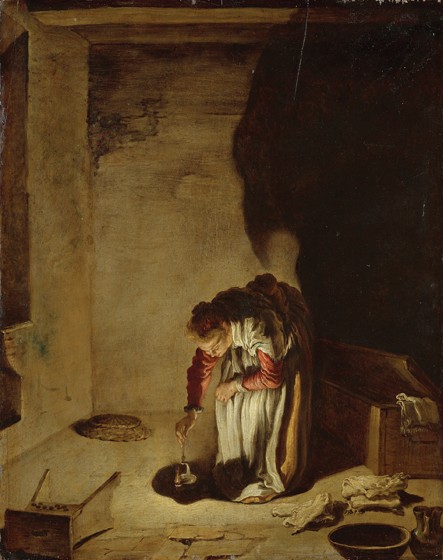The Parable of the Lost Coin, by Domenico Fetti (1589–1624)

A woman searches for a lost coin in a dark room. The frantic nature of her search is displayed by the overturned furniture and the clothing strewn across the floor. This painting was the first in a cycle of paintings on parables by the Italian Baroque artist Domenico Fetti. In Luke, the parable of the lost coin is sandwiched between two traditional images of God’s redemptive activity—the “good shepherd” and “the loving father.” Cyril of Alexandria suggests a christological interpretation for the image: “That we then who had fallen, and, so to speak, been lost, have been found by Christ . . . by the Wisdom of God the Father, which is the Son” (Commentary on the Gospel of Saint Luke, Homily 106). By the time Fetti paints the parable, this christological interpretation had given way to an ecclesial one in which the woman represents not Christ but the church: “Who are these three, the father, the shepherd, the woman? Who if not God the Father, Christ, and the Church? . . . The Church searches out like a mother” (Ambrose’s Exposition of the Gospel of Luke, 7.207–8).





